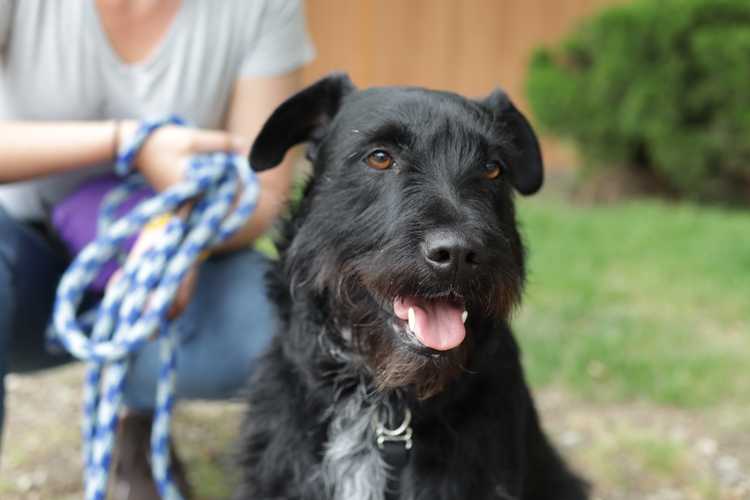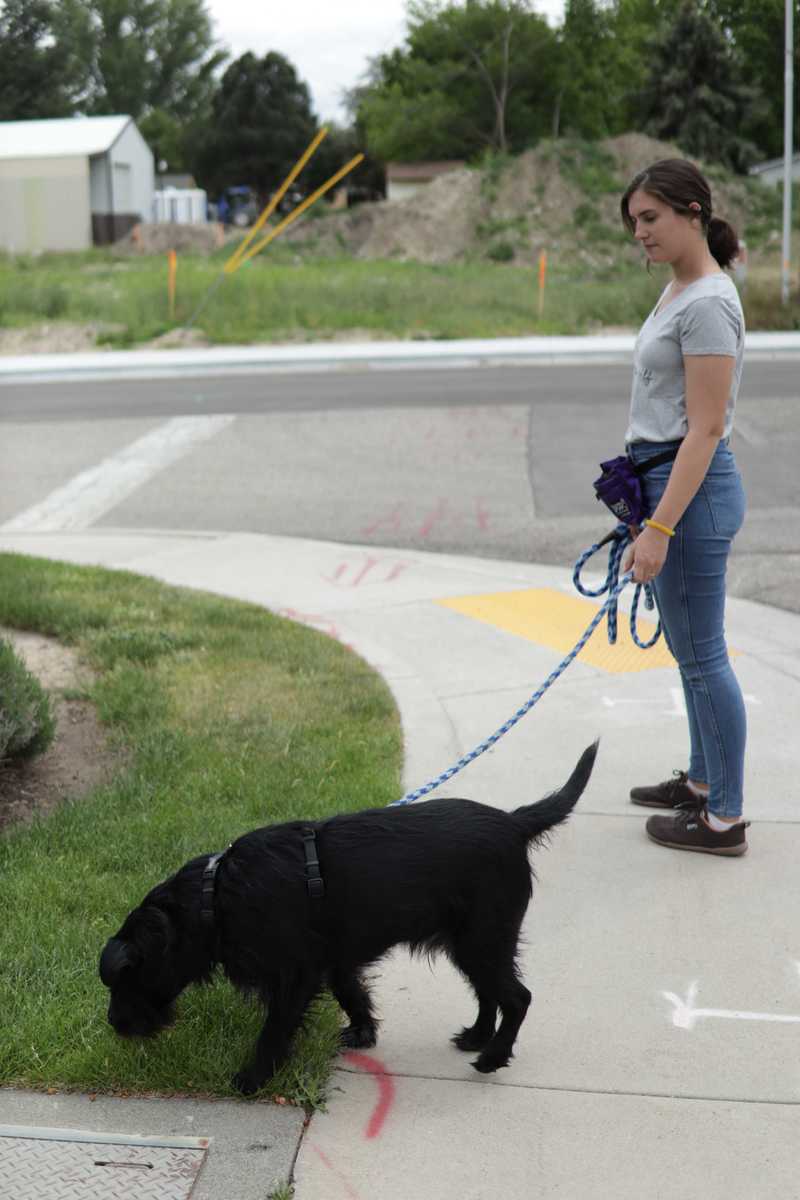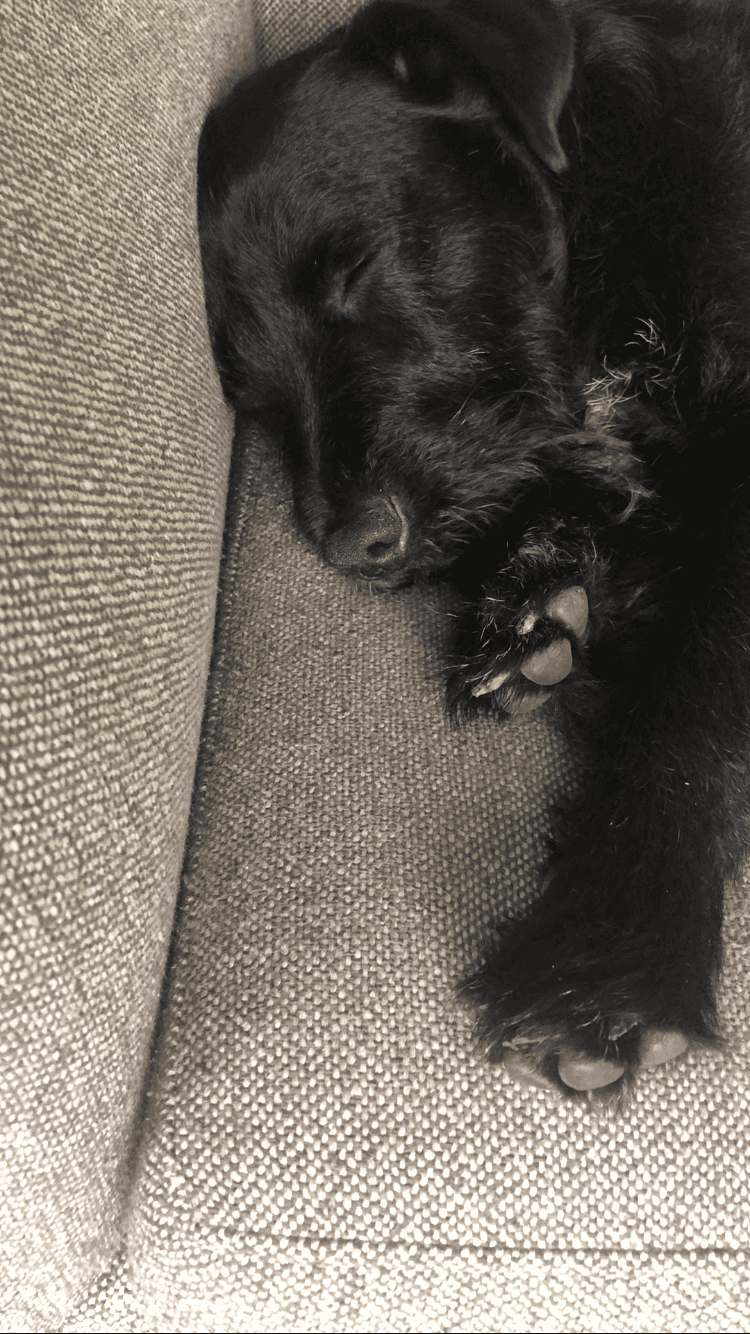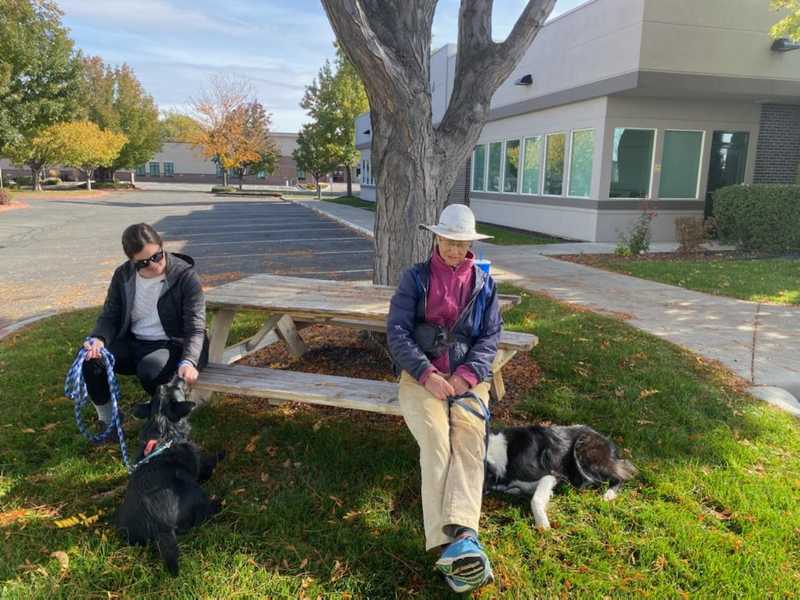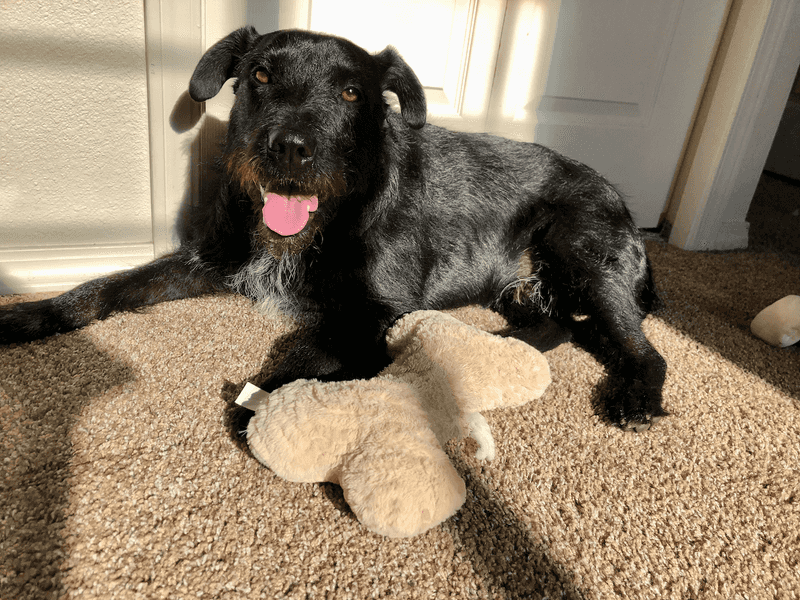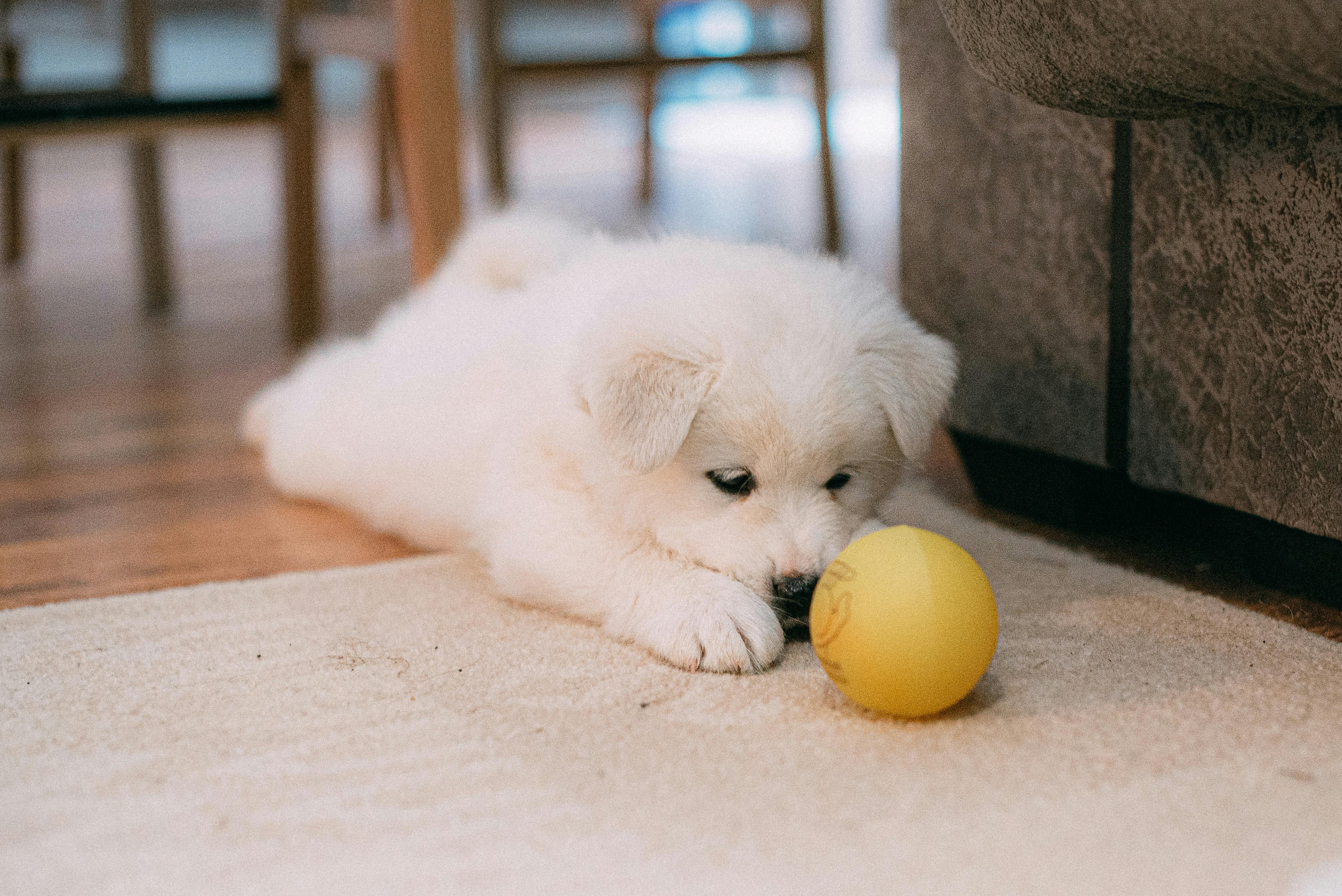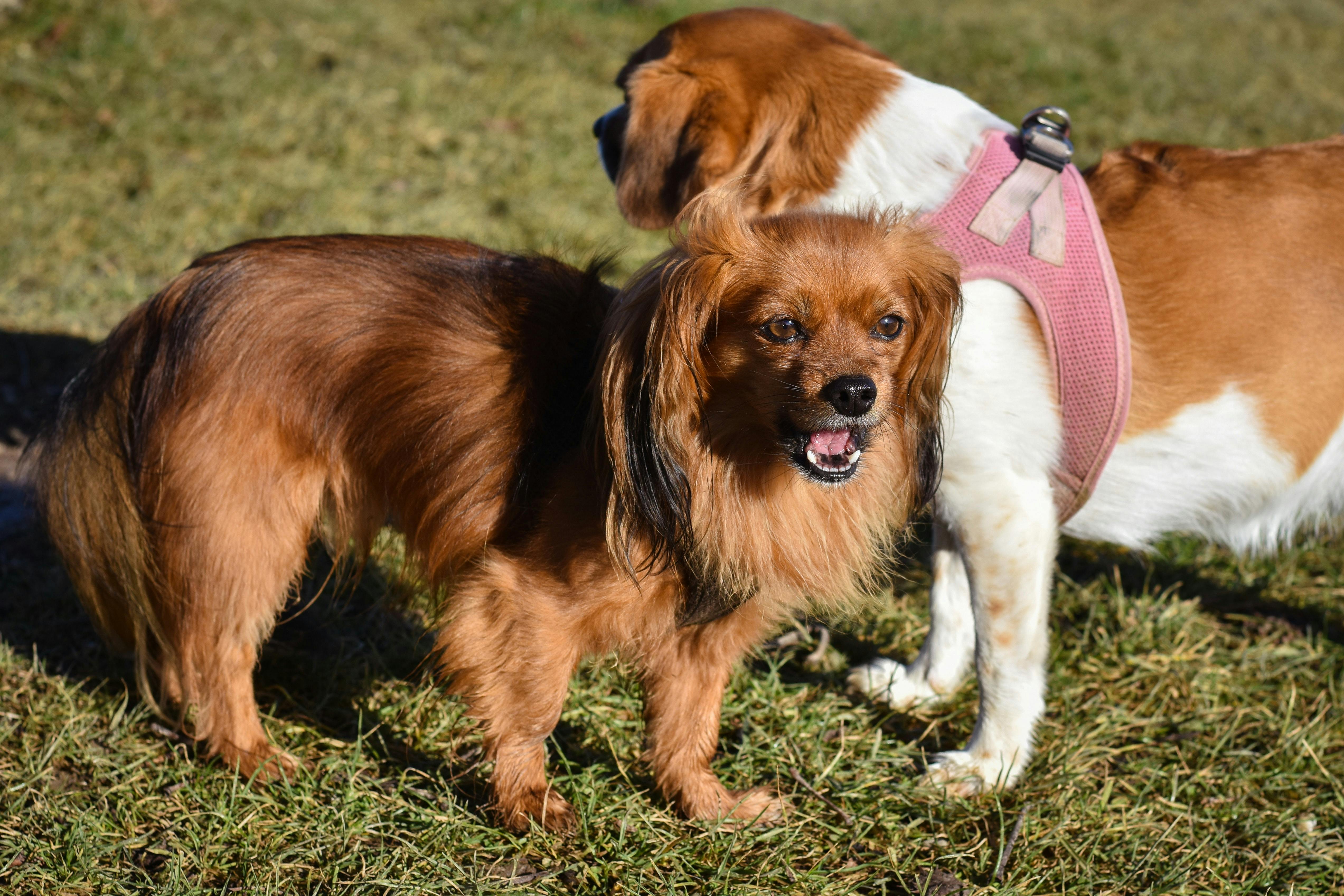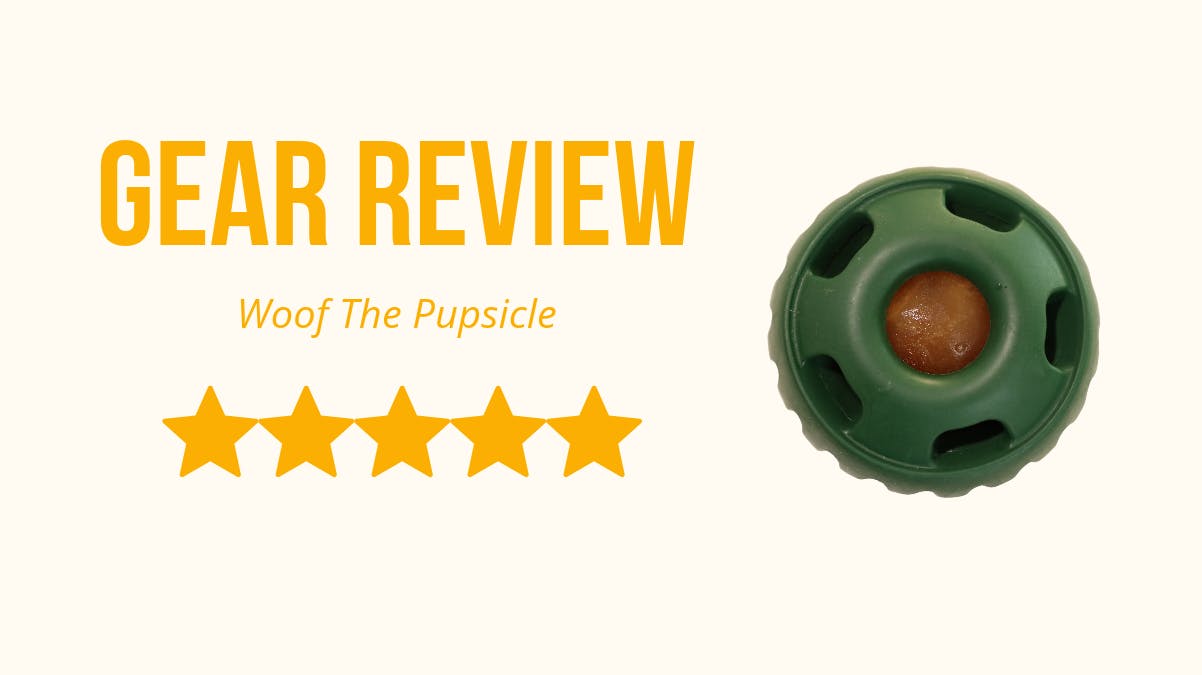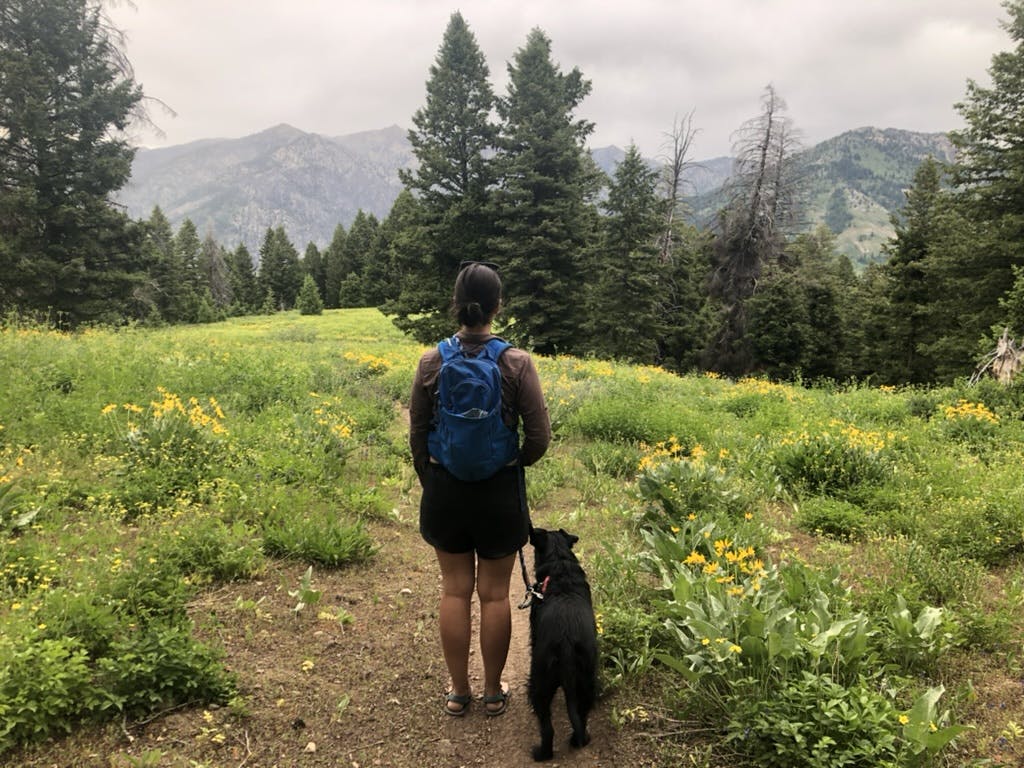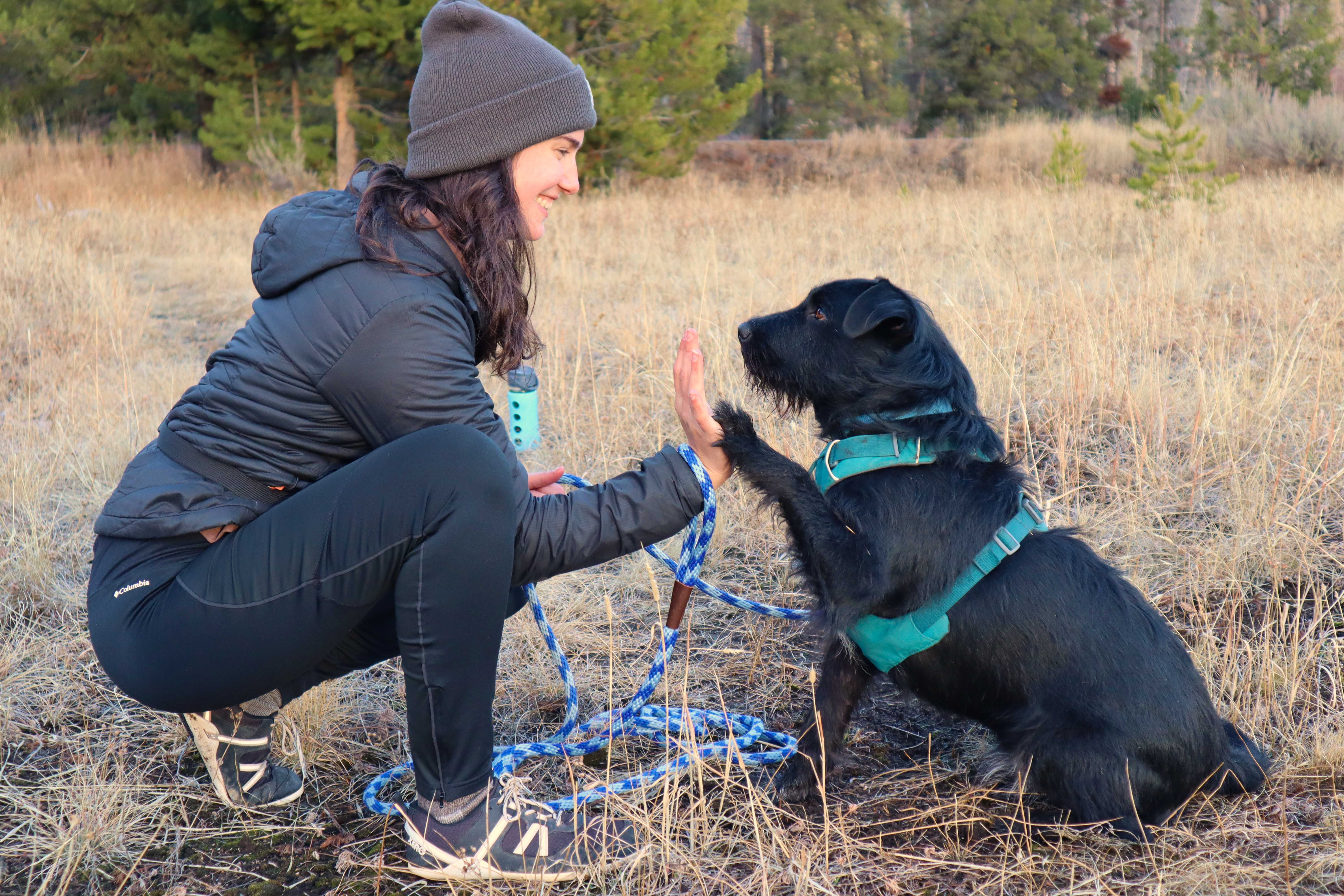Get Your Free Reactive Dog Masterclass
Unlock the secrets of rehabilitating your reactive dog with this masterclass video
The Decision To Put Scott On Anti-Anxiety Medication
Making the decision to put Scott on daily anti-anxiety medication is not one we did lightly.
We were worried that it could alter Scott's personality in a bad way. We pictured a drugged-out zombie dog who didn't want to play or do much beyond drool in his bed. (Spoiler alert: that's not what happened. At all.)
Also, dogs (unfortunately!) can't speak. What if he hated the feeling of it? Would we know? Would he be able to tell us? Would we be able to listen?
But Scott had a lot of generalized anxiety. While it'd gotten so much better since adopting him, he still seemed to struggle every single day. We wondered if we were doing him a disservice by not giving him anxiety medication.
After going back and forth for upwards of a year, we finally switched to a veterinarian with whom we felt comfortable talking about this topic. In our initial appointment with him, we spent nearly an hour discussing the possibility, including benefits and potential side effects.
We felt supported even after that conversation; he was happy to work with us to find the best drug or combination of drugs and dosages to help Scott live a happier life.
So, we made the plunge.
On Keeping Track Of Progress
After deciding to put Scott on anxiety medication, we still had mixed emotions.
To help alleviate our own anxiety, Brandon—Scott's dad who is not a professional dog trainer—decided to keep track of Scott's progress. That way, we could see subtler changes we may not have otherwise noticed.
If you're facing a similar decision for your dog, we wanted to share that progress.
Of course, this is just Scott's journey. Every dog will be different. We are also not veterinarians and this should not be taken as medical advice. It's important to discuss with your own veterinarian if this is the right move for your dog
But we hope it can help you to see one dog's experience with daily anxiety medication.
Day 0: Optimism (Sept 7, 2022)
After giving Scott his first pill, I—Brandon—was overcome with optimism. I really think this is the way to go for Scott. I'm looking forward to the next few months and feeling excited about what we might achieve.
Day 2: Couch Cuddles?
Scott's not usually a cuddly dog, but tonight he jumped up onto the couch and cuddled with me for about an hour (that beat his previous cuddle record by about 40 minutes).
Usually, Scott will only cuddle for about 20 minutes before he gets distracted by a noise or decides all that touching is too much.
I don't believe it's the drugs—it's very unlikely that they are working this soon. But I am filled with optimism and, clearly, looking for the good already.
Day 4: A Long Walk!
Scott starts most days with a long sniffari. After two years of training, this walk is fun 90% of the time. Sometimes he has bad days, but most days are good.
Today, we walked really far. The walk lasted nearly an hour and a half (our typical long walk is 20-40 mins), and Scott was totally cool, calm, and collected the whole time. When we reached the location I would normally turn around, he had a wiggly body, a gentle, open mouth, and relaxed ears. So, we kept going.
We saw two dogs (Scott's trigger). The first encounter was only a few minutes into our walk: the dog crossed us on the opposite side of the street. Scott stared at him stiffly, not listening to anything I said. But no barking or lunging and, as soon as the dog passed, Scott wanted to run over to his side of the street and smell the scent trail.
The second encounter was two mildly rowdy dogs, again walking past us on the opposite side of the street. Scott saw them, then played "find it" with me as they walked past. When they disappeared, Scott was completely calm and paying attention to me.
When we got home, Scott was relaxed and happy. Not common for a walk of this length with two dog encounters, though he's gotten much better at recovering since we've started behavioral modification with him.
It's still really early but maybe the drugs are helping him maintain a generally lower level of anxiety outside, allowing for the long walk and quick recovery. Or maybe he just had a good day.
Day 5: Attack Cats!
Scott wanted another long walk today and chose to take us to a new part of the neighborhood we'd never been to before. It was going great until we turned down the wrong street.
First, we saw a cat laying in her driveway. Scott was, as always, obsessed. I dragged him past that cat to his dismay. I don't think the medication changed his reaction to that cat.
Then we encountered the "Attack Cat" (dun, dun, dunnnn). Like the previous cat, this guy was lounging in a driveway. I thought, "oh no, I'm going to have to pull Scott straining and whining past this one too."
While I was preparing to ease Scott through this, the cat just came running at us! Like straight at us. He was in full-on attack mode. I've never seen anything like it.
Luckily for me, when Scott is nervous he freezes and stands still. So, I bent over and picked him up (to protect the cat . . . I think). The cat ran all the way to my feet, trying to get at Scott. Eventually, the cat realized we weren't a threat to his house and retreated.
Today's lesson, the world is a dangerous place. I'm happy that Scott is ready for new experiences, but we have to be careful out there.
Day 6: Night Barking
Last night was terrible. Scott barked at every single sound, real and imagined, in our apartment.
This brought us back to when we first adopted Scott. He used to be so anxious at night, we would hide in our bathroom and watch The Office on a laptop for an hour while Scott paced our room, panicking before finally passing out.
After years of training, Scott mostly ignores sounds in our house with only the occasional bark at night or when they leave a package at the front door. But last night, he barked at it all.
Day 7: First Day of Class
Along with Scott's daily medication, we are doing a reactive dog class at the Idaho Humane Society. While Taylor is a certified professional dog trainer, it can be nice to have other trainers' ideas and opinions, especially because it can be difficult to be objective about your own dog. Plus, it provides access to other dogs in a controlled environment.
Tonight was our first class: no dogs, just people.
I'm not going to lie, a little part of me was hoping they had some kind of magic trick or tool that would just make Scott better. But they only have the same tools we and everyone else do (management, avoiding rehearsing the behavior, and counter-conditioning), so those must work!
I'm really excited to work around other dogs in a controlled environment. I think this could help Scott a lot. Having another trainer make our training plan and provide accountability is also a huge relief. Having a reactive dog is hard, even when you're a professional dog trainer's partner. It's easy to get bad habits or get lazy on those walks.
Day 11: Night Cuddles
Lately, our nights are filled with thunderstorms. Not because it's raining here in Boise, but because we are listening to thunderstorm soundtracks in our living room at night.
We're trying to stop Scott from rehearsing his barking at night. So we started playing nature sounds to drown out the outside world... and it is working! He is not barking at all, in fact, he's plopping up on the couch and cuddling with us all night. It's so cute and highly unusual for Scott.
Clearly, the medication, the daily training, and the music is helping our Scotty boy relax in a way he's never been able to before.
Day 14: Second Day of Class
My heart is still pounding. We spent 45 mins in a room with three other reactive dogs. Scott was stressed but managed to do a lot of the behaviors we were working on. And the trainers were amazing at creating the best possible learning environment.
I'm really happy we chose to take this class so we can spend time training Scott around other dogs in a safe, controlled environment. And the accountability from the trainers, knowing I have to show them Scott's progress each week is really helpful.
Even though my partner is a professional trainer, owning and managing a reactive dog 24/7 is exhausting, so we don't always stick to the training we know we need to do. Having the structure of this class is quite uplifting and energizing.
I don't think the medication was doing anything during the class. Scott was about as freaked out as I thought he would be.
Day 19: Reality Check
I haven't written an update in a while because I don't know what to write.
The initial excitement and optimism have worn off and now I'm spending my days analyzing every single move Scott makes. Is he barking less, calmer outside, sleeping better? Is that the medication or am I just looking for patterns that aren't there?
The vet said it can take up to a month to see changes. But being patient is not easy. And doubt has begun to creep in. I'm starting to think, these meds aren't going to help and that Scott will always be nervous all the time.
Day 23: It's Working...We Think
A few signs are telling us something is changing in Scott.
He's taking treats outside more often and he's shaking off a lot more. (Note: When your dog shakes off when they're not wet, that's frequently a sign that they're handling stress.)
At our last reactive dog class, his cup didn't fill (he didn't become overstimulated) until much later in the class than previously. He was doing fine for about 45 minutes. At that point, he started showing signs of stress and was struggling to train. This could be because he's used to the room and the trainers by now—or a sign that the medication is helping. (Or both!)
We haven't seen a miracle transformation (yet), but we've noticed positive changes.
Day 27: Class was a Blast
If you know a lot about dog body language, you may notice that lip lick in the above video. This is not a displacement behavior because that lip lick is in context — Scott is anticipating the treat he sees he's about to get.
Scott's cup never filled during the 1-hour class. He actually laid in a relaxed down (hip out) for a huge chunk of class.
In part of the class, we were outside surrounded by other dogs from the class (about 50-100 ft away) and Scott stayed totally calm. He engaged with us and training.
I feel amazing! I'm excited about the next class.
Day 33: Big Changes!
We're seeing big changes. Over the last few weeks, we've done a ton of training with Scott and have paid close attention to him. Taylor and I both noticed the following:
- He almost always takes treats outside
- He calms down from tough situations much better
- He's playing more
- He played with a toy outside (very rare)
- Scott is dismissing dogs and people all the time
- Listens to us most of the time when we're outside
- Disengages from triggers outside
Scott's personality hasn't changed and he's not a normal dog at all. But the medication and training have brought every level down a step. If seeing a dog used to send him to a red alert, now it's just a yellow alert. And noises in the apartment used to be yellow, but now they're greenish.
Day 40: Calm Greetings
For a long time, we thought Scott was simply an over-enthusiastic greeter toward people. After Taylor went through her professional program and learned more and more about dog behavior, we realized that Scott's "over-enthusiastic" greetings are actually a sign of anxiety.
The typical ways to train calm greetings weren't working with him because Scott was always in his emotional brain, not his thinking one.
Today, I saw something incredible. Scott greeted a random man we saw on a walk by going up to him and asking for pets (by sitting at the man's feet with his back toward him.) My jaw dropped. Scott is more nervous around men than women, but he was completely calm and relaxed while this stranger pet him.
Honestly, we haven't done much behavioral modification with people (there are too many other priorities!), so I have to guess that the medication is doing some work here. Scott would not have been able to do this before.
Day 52: Amazing Behavioral Modification Setup
We've been doing behavioral modification setups every other week with Scott for about six months. The one today was the best we've ever had.
Scott calmly walked right next to another dog without even a human buffer. We did multiple laps around a giant parking lot with the dogs beside each other—and Scott was looking and acting like a normal dog the entire time! We even finished the setup with the dogs laying somewhat near each other.
I don't credit the medication 100%. But we've never seen progress quite like this on our journey in the past. The medication seems to help Scott stay in his "thinking brain," so that our behavioral modification setups can be more effective.
Day 67: Best Walk Ever
Today we saw about 25 dogs on our walk and Scott was amazing! I used every management technique in the book, we played find-it, hid behind cars, and a BAT (Behavioral Adjustment Training) leash technique. We were even able to play the behavioral modification technique of engage-disengage at times. Scott followed me along for every trick as the dogs just kept coming. I was actually having fun.
I can't say it was just the drugs that helped Scott. We've been practicing all of his management techniques for months and Taylor's been working on BAT training with him. But I feel like the medicine helped me to stay calm while we did it all. (And medication can help training be more effective!)
Then when we got home, he just passed out happily in the sun. Normally after so many dog encounters, Scott would be hyped. Now, he's able to shake it off and move on with his stress-free life.
Conclusion
After closely following Scott's progress on anxiety medication for 60 days and counting, we've reached the conclusion that it was a great choice for him. He's still himself (not a zombie dog!). In fact, I bet most people wouldn't be able to tell that he takes daily medication.
Of course, it didn't cure Scott's reactivity. He still is triggered by other dogs. But we've noticed:
- His "recovery" time is much faster than it was before. Meaning, one stressful situation in the morning doesn't ruin his entire day
- He can ignore sounds in our apartment a lot easier than before
- He's more playful (probably because he's not stressed!)
- He cuddles longer (he'll stay cuddling with us for hours—not something he used to do)
- We're having faster success in controlled behavioral modification setups
- He's calmer outside overall
- He seems happier overall
Now, it's important to state again that we're not veterinarians. You should discuss with your own veterinarian if this is the right move for your dog. We also are working hard on behavioral modification and management along with medication. Medication is unlikely to work on its own.
But, we hope, that seeing our experience can help you with your decision on whether or not anxiety medication is appropriate for your pup.

